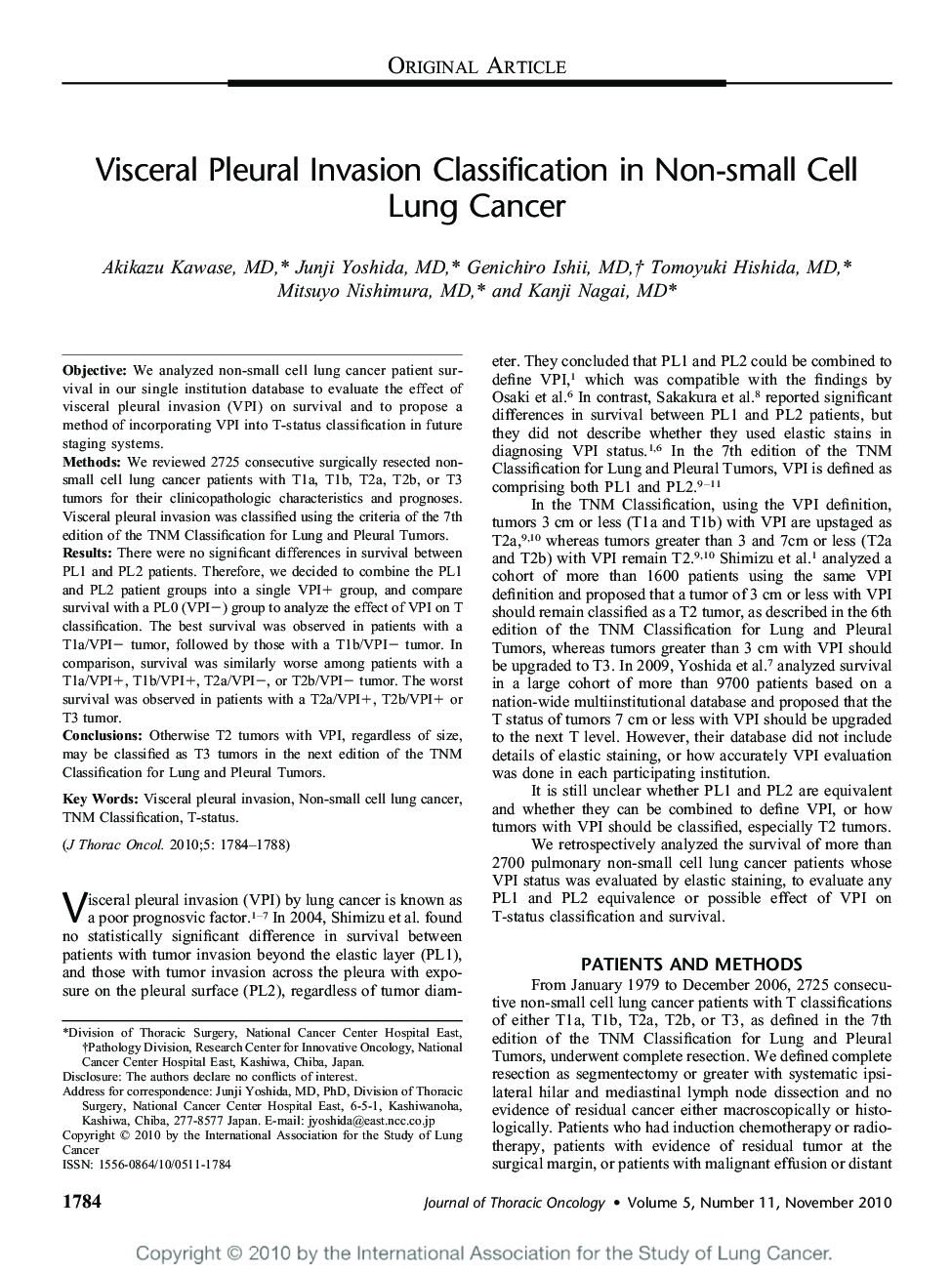| Article ID | Journal | Published Year | Pages | File Type |
|---|---|---|---|---|
| 3991647 | Journal of Thoracic Oncology | 2010 | 5 Pages |
Objective:We analyzed non-small cell lung cancer patient survival in our single institution database to evaluate the effect of visceral pleural invasion (VPI) on survival and to propose a method of incorporating VPI into T-status classification in future staging systems.Methods:We reviewed 2725 consecutive surgically resected non-small cell lung cancer patients with T1a, T1b, T2a, T2b, or T3 tumors for their clinicopathologic characteristics and prognoses. Visceral pleural invasion was classified using the criteria of the 7th edition of the TNM Classification for Lung and Pleural Tumors.Results:There were no significant differences in survival between PL1 and PL2 patients. Therefore, we decided to combine the PL1 and PL2 patient groups into a single VPI+ group, and compare survival with a PL0 (VPI−) group to analyze the effect of VPI on T classification. The best survival was observed in patients with a T1a/VPI− tumor, followed by those with a T1b/VPI− tumor. In comparison, survival was similarly worse among patients with a T1a/VPI+, T1b/VPI+, T2a/VPI−, or T2b/VPI− tumor. The worst survival was observed in patients with a T2a/VPI+, T2b/VPI+ or T3 tumor.Conclusions:Otherwise T2 tumors with VPI, regardless of size, may be classified as T3 tumors in the next edition of the TNM Classification for Lung and Pleural Tumors.
